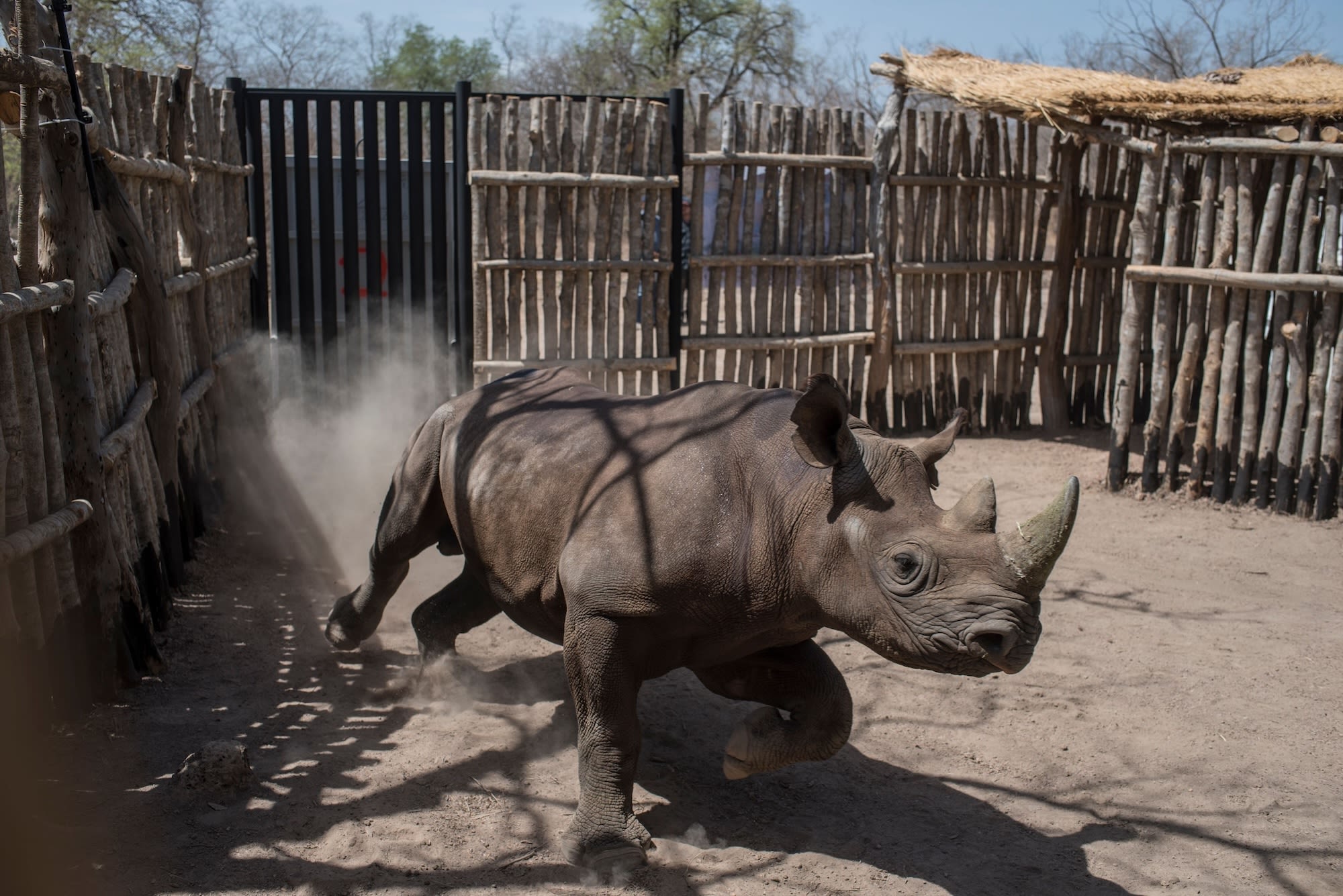Editor’s Note: Call to Earth is a CNN editorial series committed to reporting on the environmental challenges facing our planet, together with the solutions. Rolex’s Perpetual Planet Initiative has partnered with CNN to drive awareness and education around key sustainability issues and to inspire positive action.
Sporting two impressive horns, the black rhino, which weighs up to 1,350 kilograms (3,000 pounds), isn’t really black at all. Much like the “white” rhino, it’s a muddy-gray color.
As the story goes, English settlers in South Africa mistook the Afrikaans word “wyd” (meaning “wide” in English), used to describe the mouth shape of the larger of the two rhinos, for the English word “white.” So, naturally, black was then used to refer its smaller, pointier-lipped relative. Or, others suggest the name reflects the dark color it turns after a muddy wallow.
Consistent hunting and land clearance throughout the early and mid 20th century reduced the black rhino population to an estimated 100,000 by 1960. In the following decades, large-scale poaching intensified, causing a 98% collapse in population size, with total numbers reaching an all-time low of 2,354 in the mid 1990s.
This prompted drastic and concerted conservation efforts across several African countries to help save the critically endangered species. A ban on black rhino trade, the expansion and stricter protection of their home ranges, and relocation programs involving unusual methods, have resulted in a remarkable recovery. According to the IUCN, 6,421 black rhinos were recorded across the continent in 2024.








